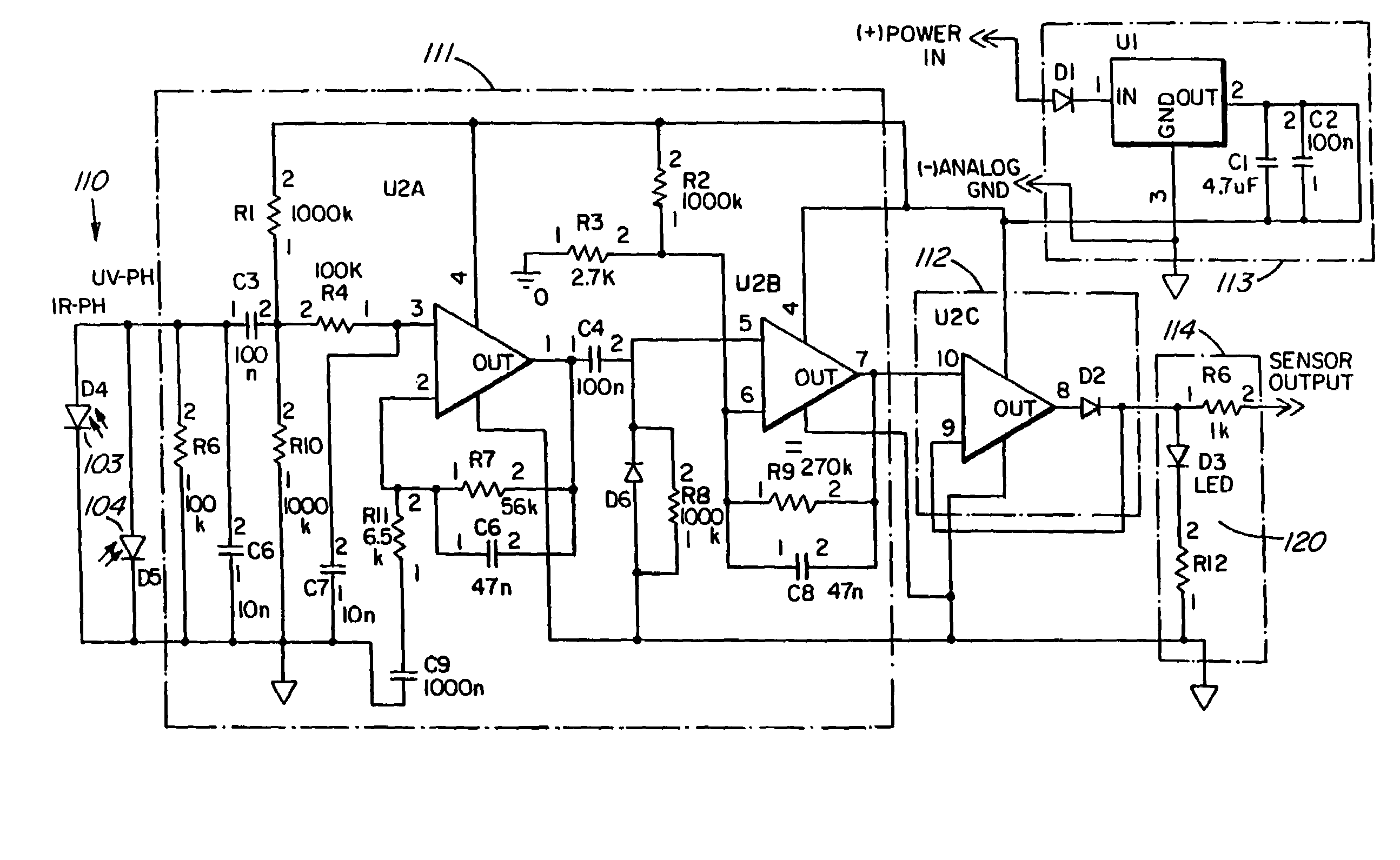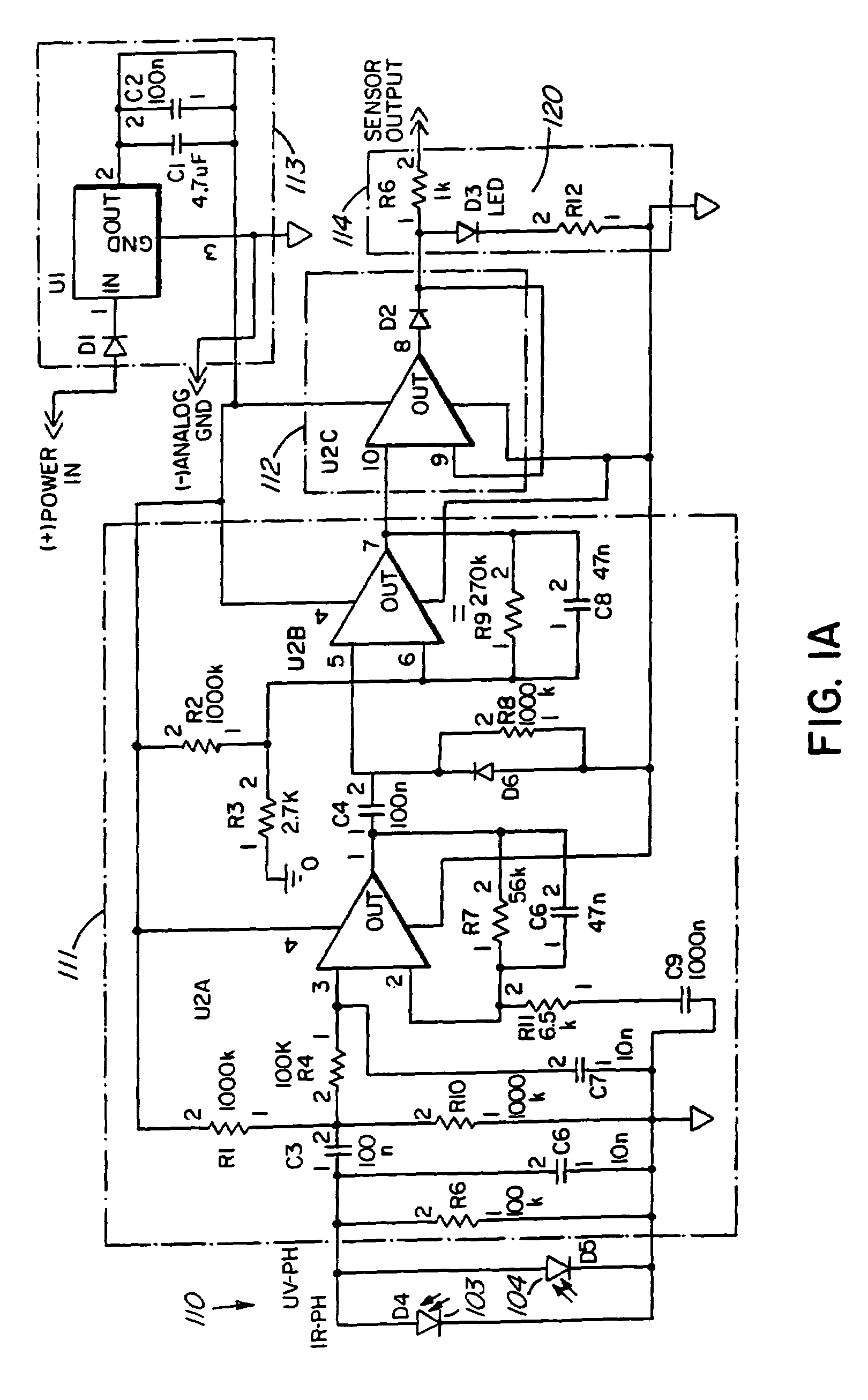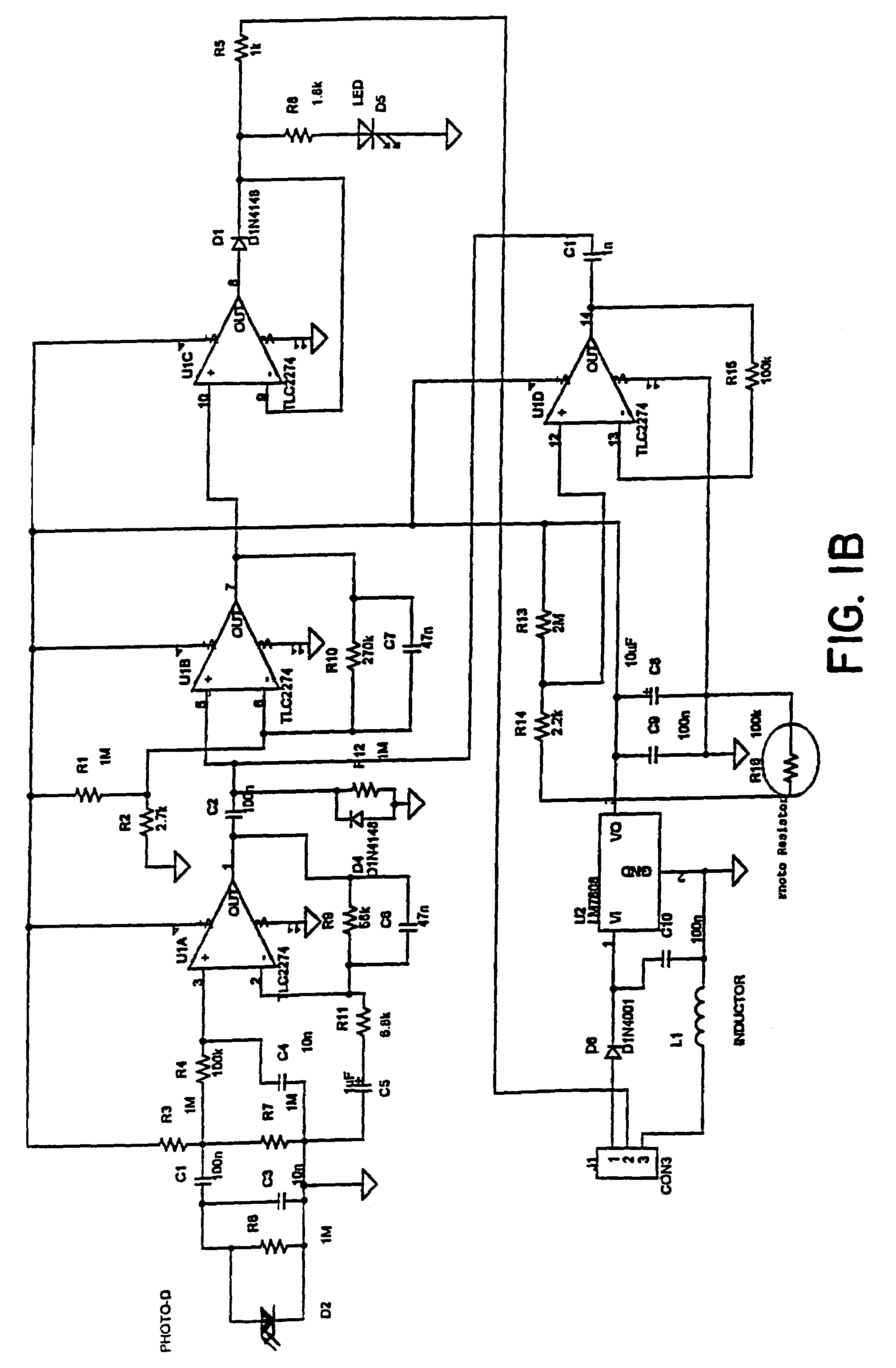Flame sensor for a burner
a sensor and burner technology, applied in the field of flame sensor for burners, can solve the problems of unintended termination of the burner or heater operation, inconvenient termination of the fuel flow, and disrupting the integrity of the signal being passed to the amplifier by the sensor
- Summary
- Abstract
- Description
- Claims
- Application Information
AI Technical Summary
Benefits of technology
Problems solved by technology
Method used
Image
Examples
Embodiment Construction
[0023]Referring now to the drawings, a powered multifuel burner is generally illustrated at 100 in FIG. 7. An infrared type burner 101 has a flame 105 (FIG. 6) generated within the cylinder 106 of the burner 101 by way of an air aspirated nozzle (not shown) which uses a venturi effect to draw fuel into the nozzle. Combustion takes place outside the nozzle but within the cylinder 106. The flame sensor 110 is located generally at 102 as illustrated in FIG. 6.
[0024]The flame sensor 110 may include either an infrared sensor or an ultraviolet sensor or, alternatively, a combination of an infrared and ultraviolet sensor. Each or both of the sensors 103 are positioned in the housing 121 (FIG. 4A) to sense the visible infrared and ultraviolet radiation produced by the combustion flame. The sensors 103 selected for the particular application will depend on the flame being produced within the burner 100. If, for example, the flame burns with an orange patina, the primary sensor will be infrar...
PUM
| Property | Measurement | Unit |
|---|---|---|
| voltage | aaaaa | aaaaa |
| voltage | aaaaa | aaaaa |
| voltage | aaaaa | aaaaa |
Abstract
Description
Claims
Application Information
 Login to View More
Login to View More - R&D
- Intellectual Property
- Life Sciences
- Materials
- Tech Scout
- Unparalleled Data Quality
- Higher Quality Content
- 60% Fewer Hallucinations
Browse by: Latest US Patents, China's latest patents, Technical Efficacy Thesaurus, Application Domain, Technology Topic, Popular Technical Reports.
© 2025 PatSnap. All rights reserved.Legal|Privacy policy|Modern Slavery Act Transparency Statement|Sitemap|About US| Contact US: help@patsnap.com



